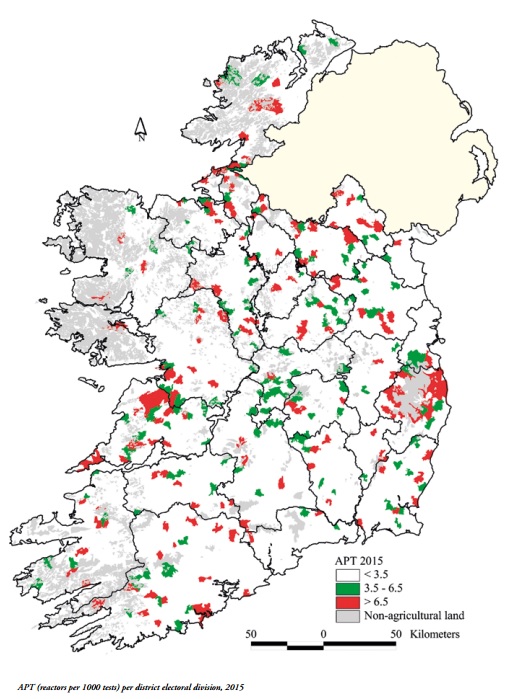A newly released report on Bovine TB in Ireland has been published by the Department of Agriculture.
Incidences of TB in cattle herds last year fell on 2014 levels, the latest figures from the Department show.
In 2015, there were 15,317 reactor cattle, down 828 head on 2014.
Number of reactors 2015
The highest number of reactor cattle was in Co. Clare with 1,383, followed by Co. Wicklow with a total of 1,184 reactors and Cork South with 1,127.
The lowest number of reactor cattle in 2015 was in Co. Dublin with 63 reactors, followed by Co. Louth with 120 reactors and Co. Kildare which had 138.
Density of TB incidence in 2015
History of TB in Ireland
In Ireland, the bovine tuberculosis (BTB) eradication programme commenced in 1950 and became compulsory throughout Ireland by 1962.
The initial driving forces for the programme were production losses in cattle, human health problems and a desire to trade in live bovine animals, primarily store cattle, to the UK.
While the operation of the programme has ensured that production losses in cattle and human health concerns are no longer active issues, the programme remains necessary to ensure that trading possibilities, which expanded post-1965, may be taken advantage of by fulfilling the European trading conditions for live animals.
Despite strict adherence to testing and control measures, exceeding those of countries that had eradicated BTB, the Irish eradication programme has considerably reduced rather than eradicated BTB.
According to the Department, unlike those countries which have succeeded in eradicating BTB, Ireland has a wildlife species, the badger (Meles meles), in which BTB is endemic and shares the same environment as bovine animals.
It says considerable research effort has been devoted to determining the contribution of wildlife to the BTB problem and in trying to develop a viable long-term solution to the wildlife issue.



